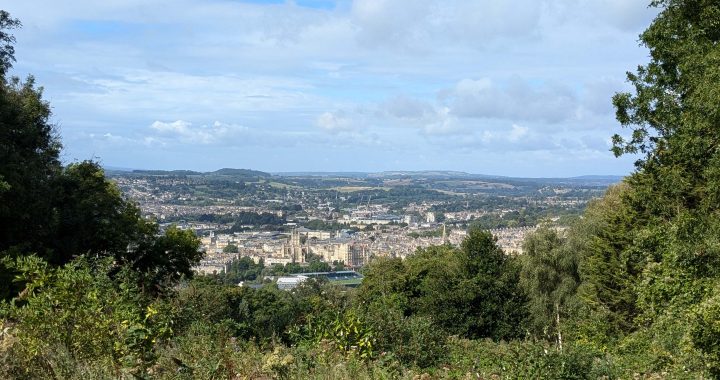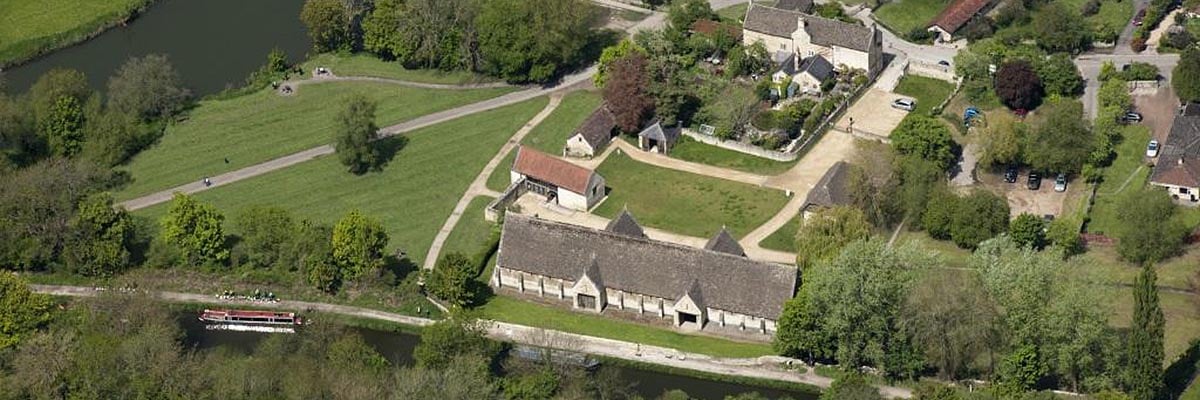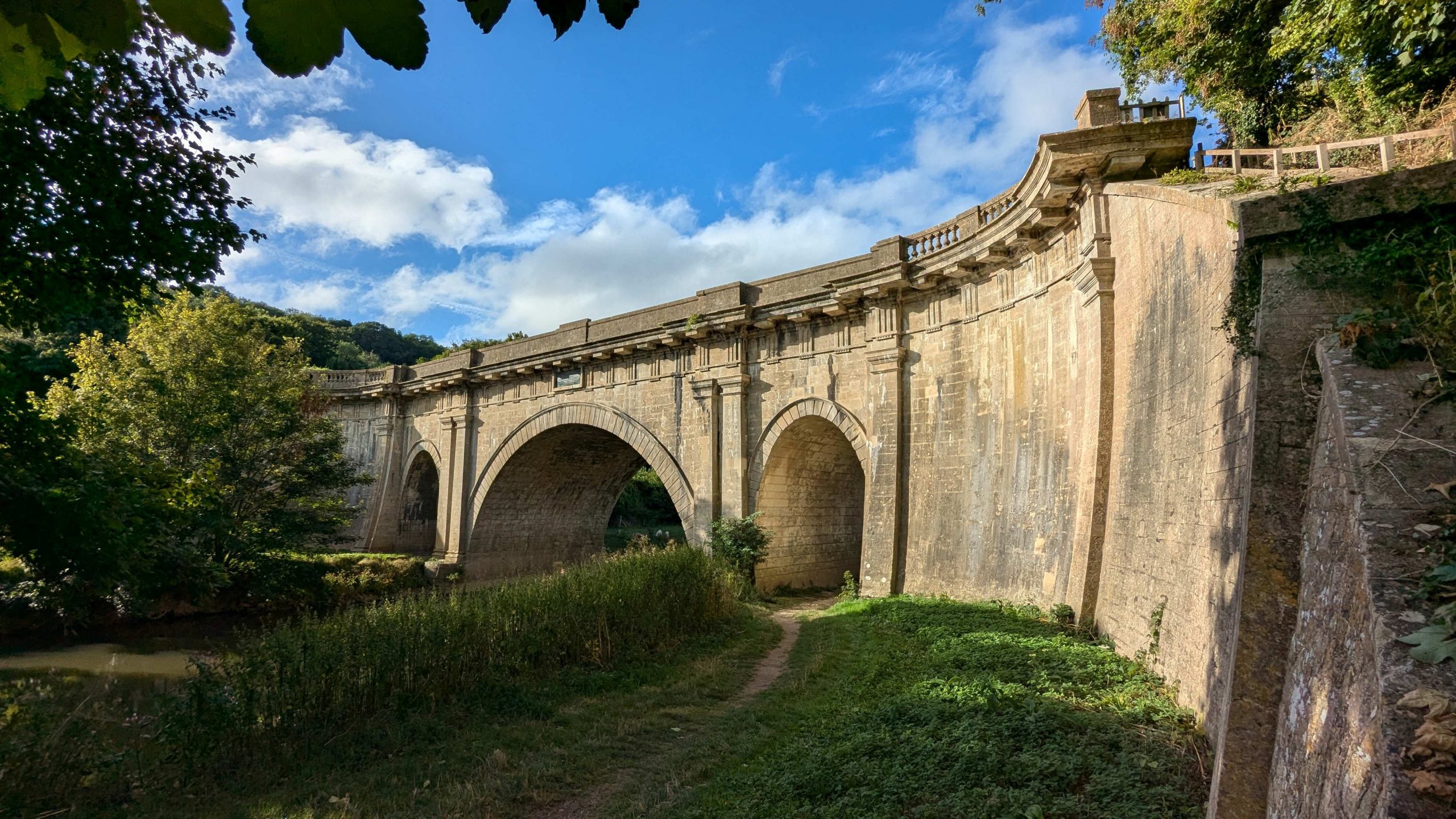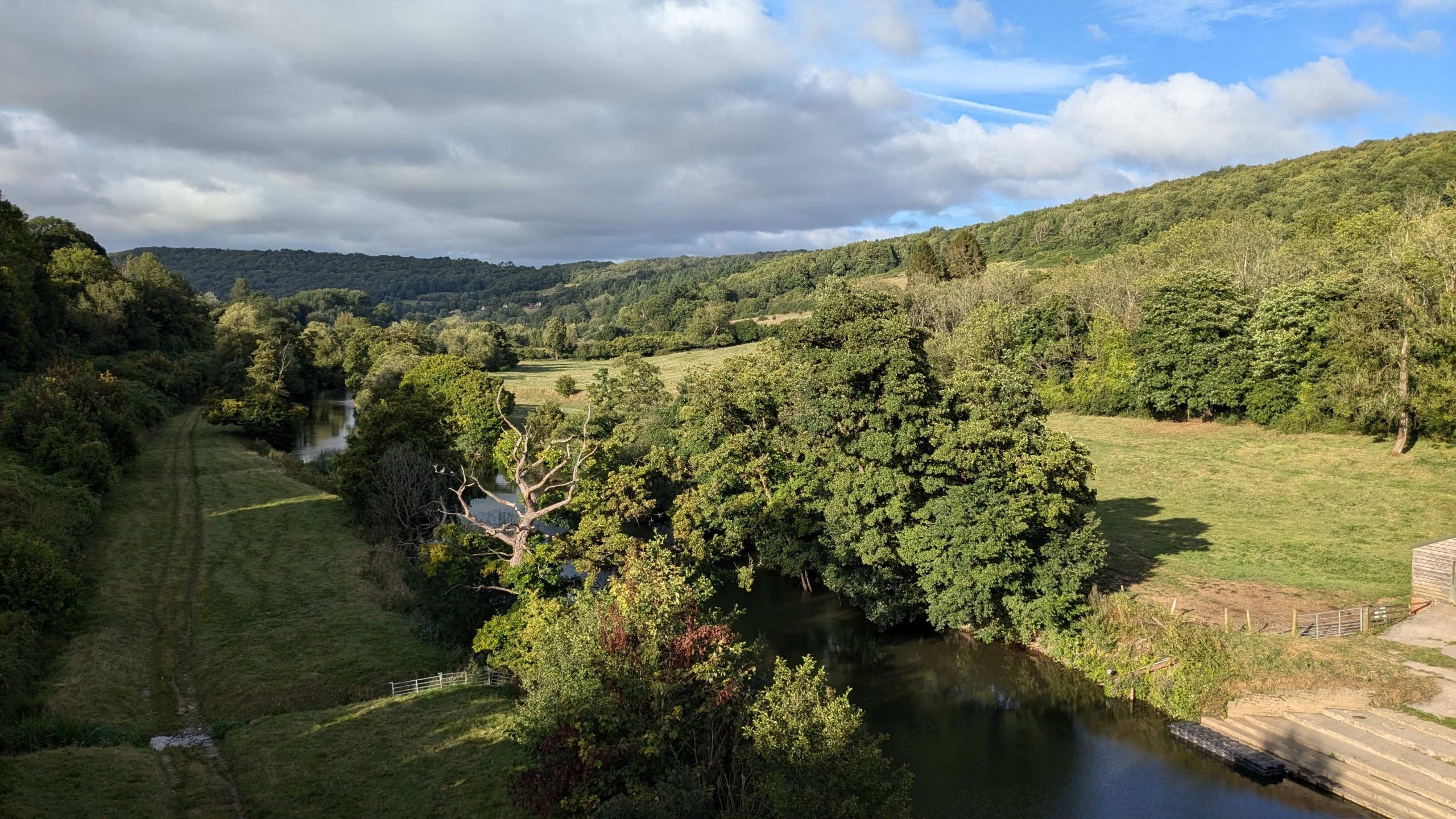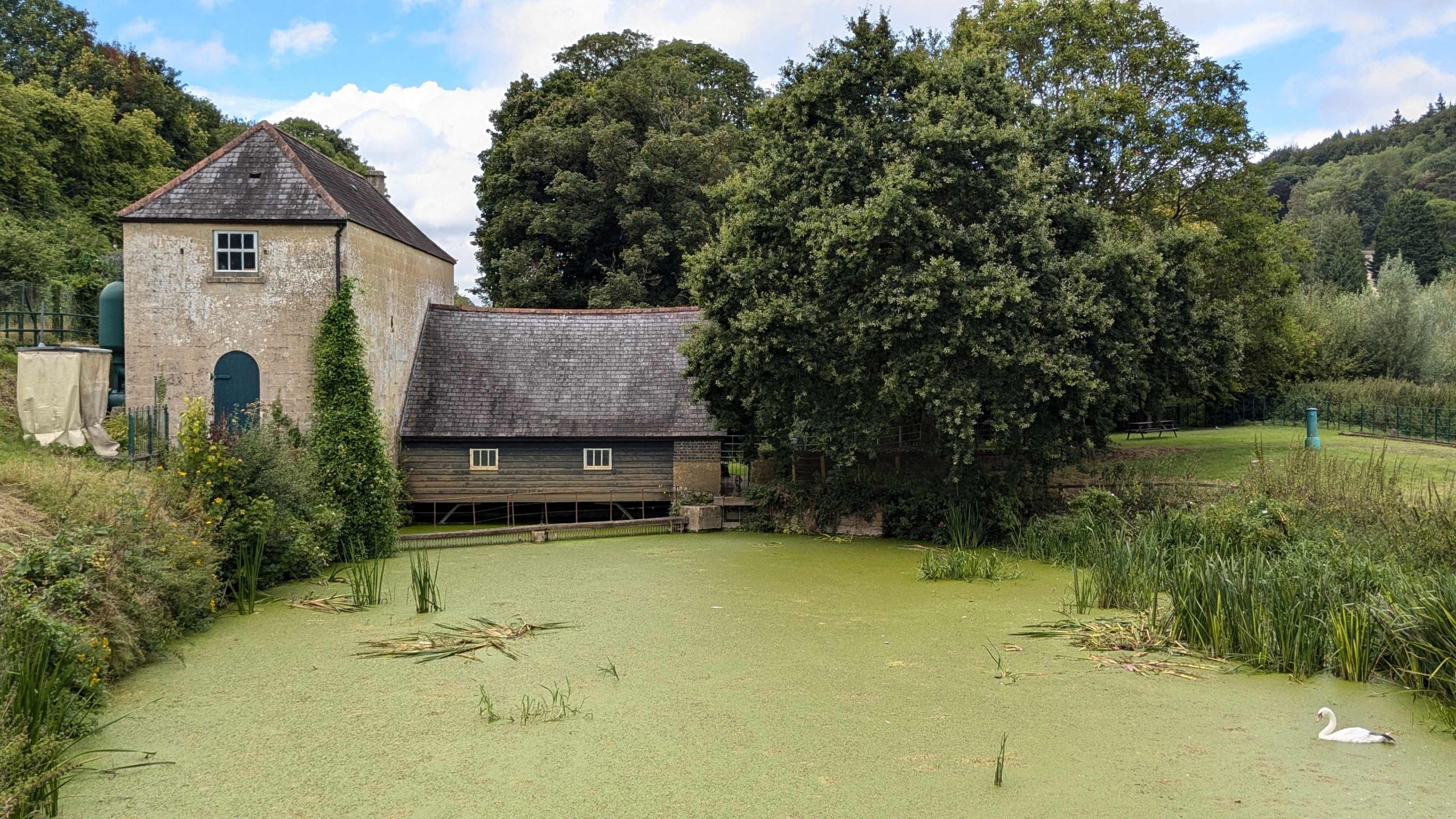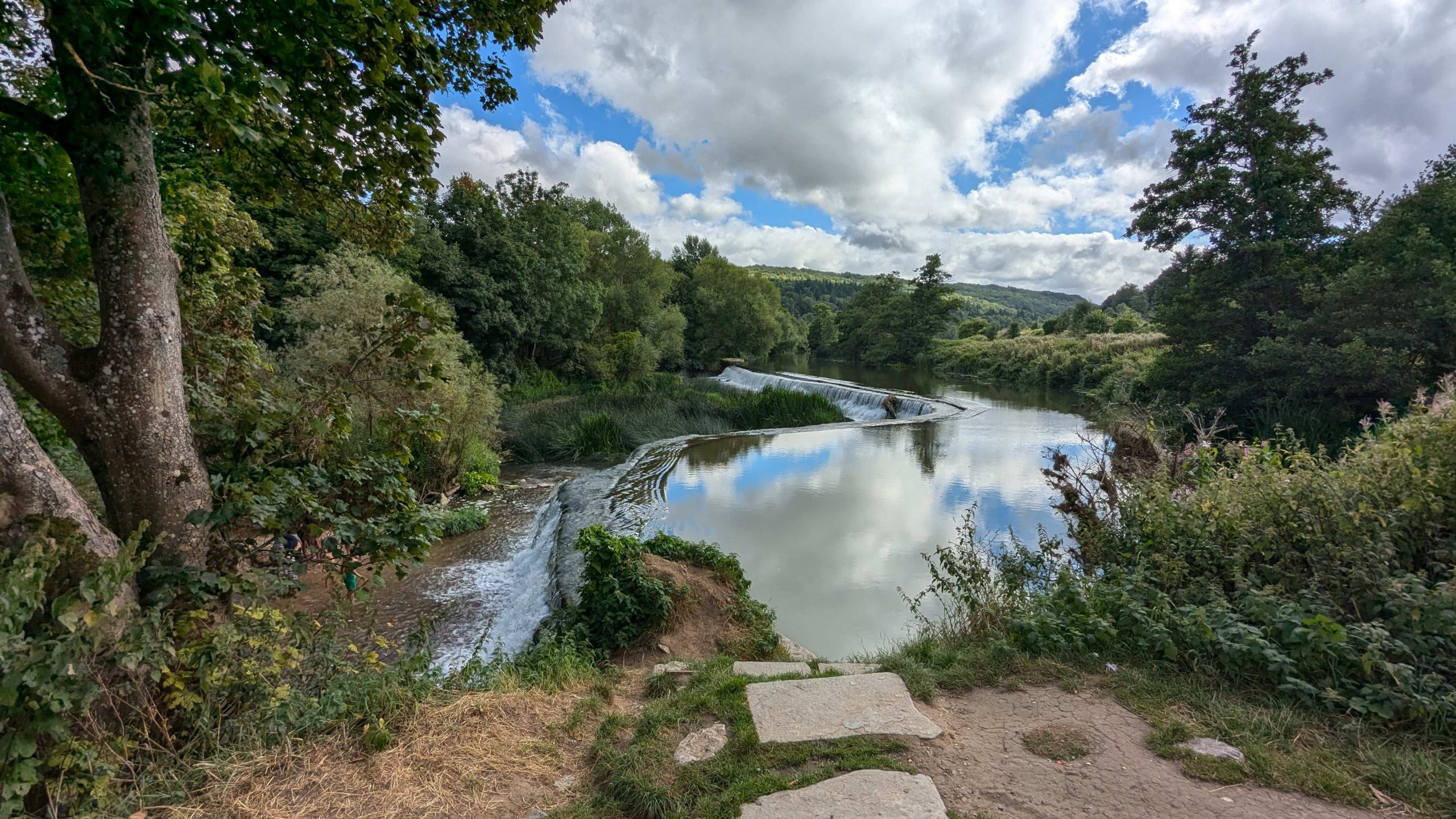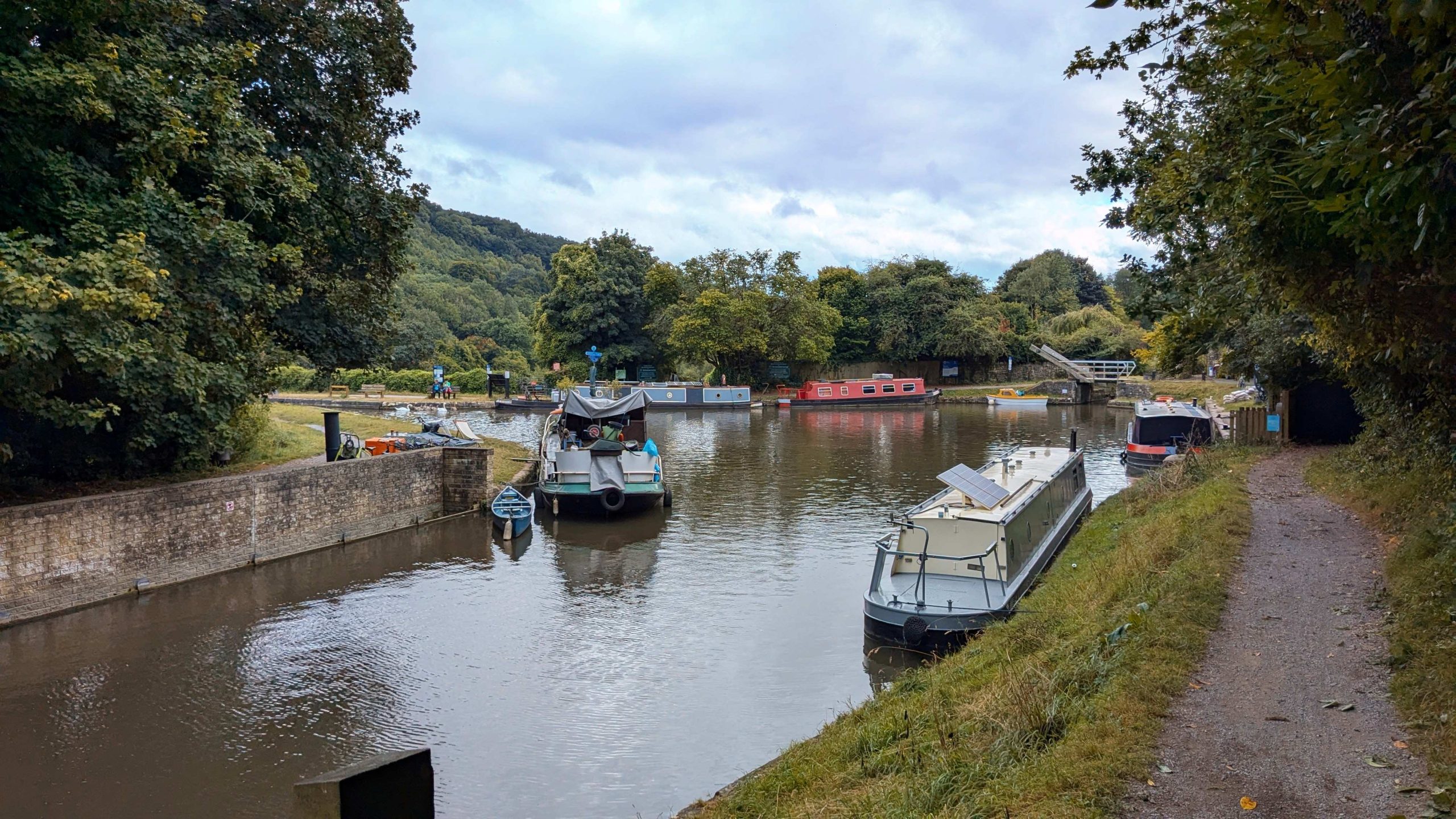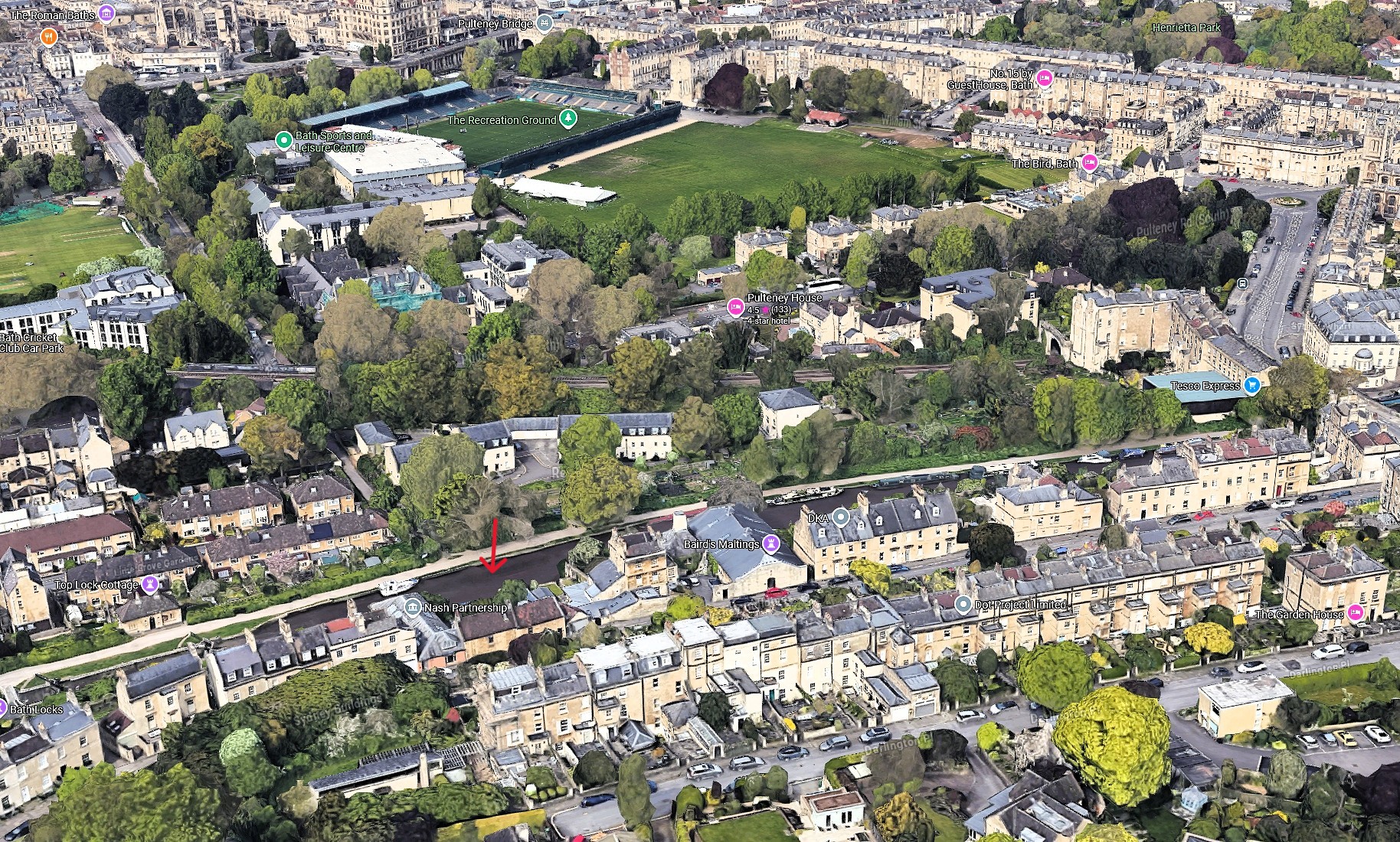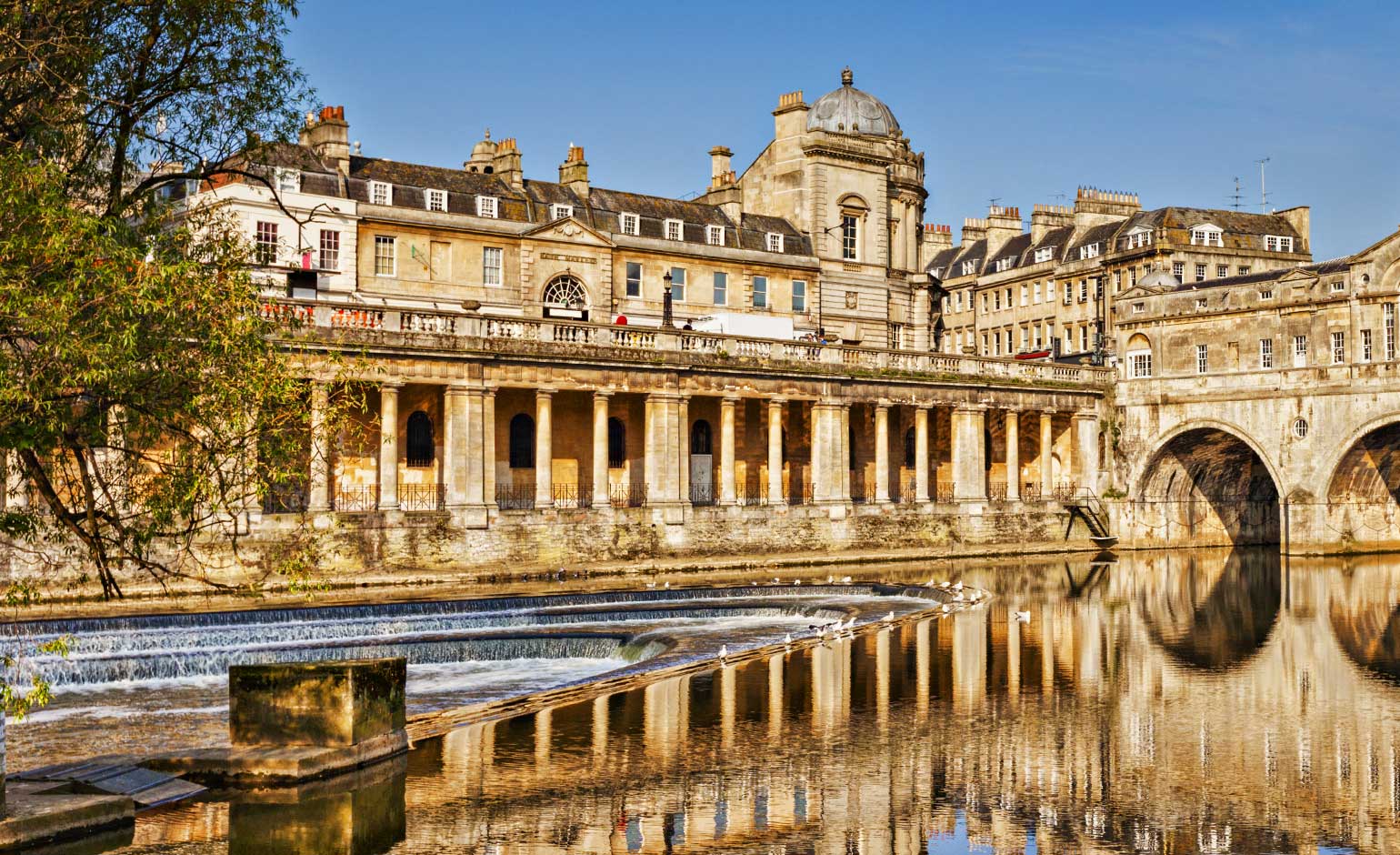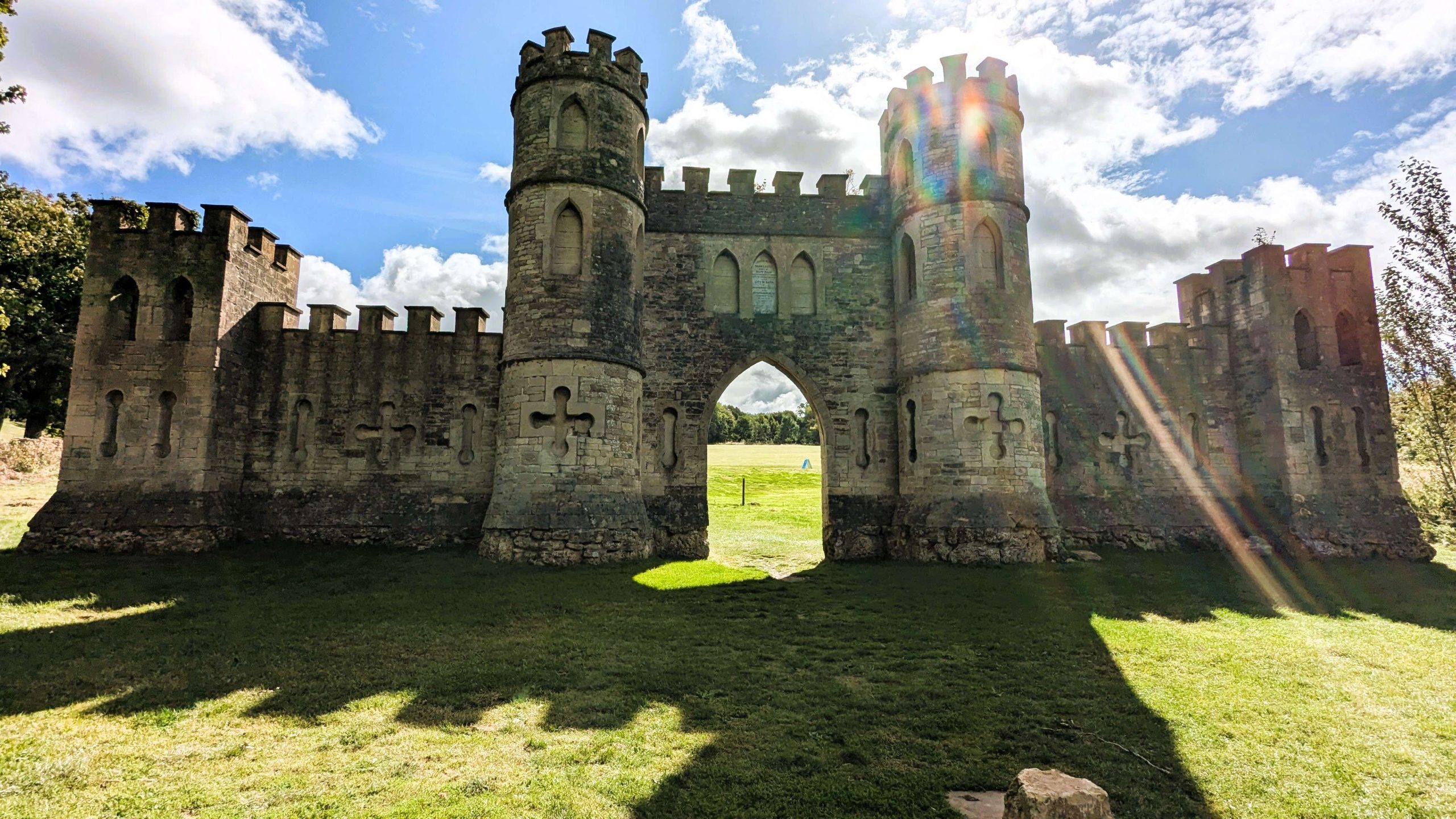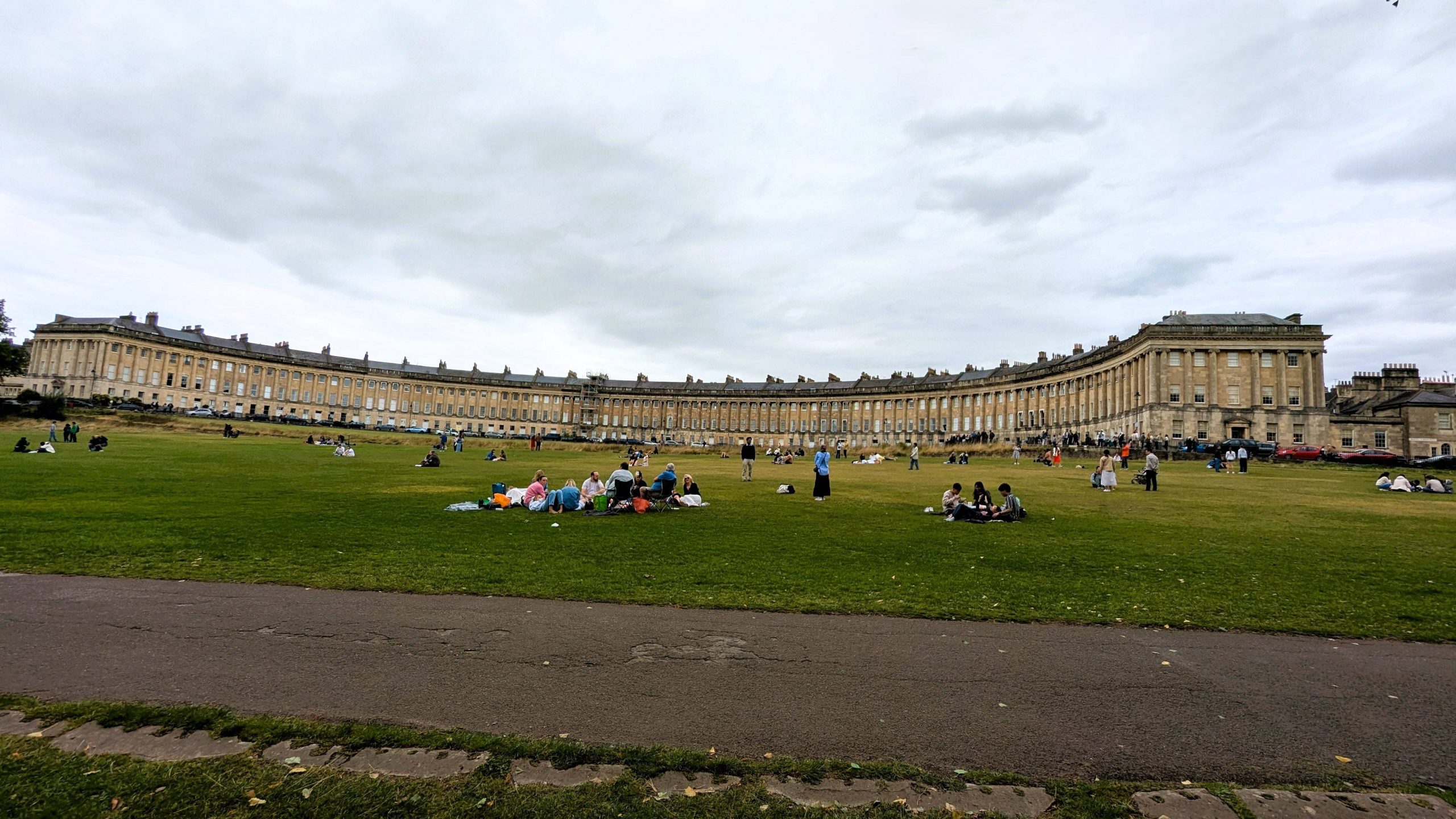Cruising 101
The trip down from Devizes was our one hundredth day aboard since setting out in April, discounting the days when we had been away from the boat for one reason or another. Sunday, eighteenth August, then, was day one hundred and one. We spent it finishing off the last seven locks of the Caen Hill flight, down to Lower Foxhangers.
It only took about two hours for the journey of one mile but it was harder work without the crew of "Izzie" to help and we had one lock stolen right out from under us by a rather over-enthusiastic crew member of "Raven Hafven", working too far ahead of her boat. She did apologise but also warned us about the Sausage & Cider Day taking place this weekend a couple of miles further on at Seend.
We were happy that we had had enough by midday so it was an easy decision to stop well before reaching Seend. There is an independent boat hire company with a hire base just below the last lock at Lower Foxhangers, with a marina opening up behind it. Opposite the hire base is a forty-eight hour mooring, which was completely empty, so that is as far as we got.
About three o'clock "Cracker" turned up and moored up on the lock landing. A bit later on he attempted to turn round and moor back up on the landing again. He seemed to be having trouble, so I went out to give him a hand. It turned out that he was having engine problems and was waiting to go into the marina to have it looked at the next day, so we hand hauled it down past our boat and off the landing to get him tied up on the visitor mooring.
I took Archie for a walk around the area, mainly round a giant solar panel farm as it turned out, then we all walked about a mile up the towpath to Sell's Green and the Three Magpies for a drink before dinner. Considering that the pub was also running a large caravan site on a hot August weekend, it was surprisingly calm and well-organised and well worth the walk.
Monday morning was a bit of a rude awakening. The hire base started work very early and there seemed to be huge numbers of boats being moved backwards and forwards, at considerable speed, as their water supply was just by the lock and the embarkation point for large parties arriving to board their hire boats was right opposite us. The weather was grey, overcast and windy, with an unpleasantly moist atmosphere, although the real rain held off until the evening.
We got through the five locks at Seend and then Semington Top Lock, as well as five swing bridges and having to make two separate stops for different services on the way. Semington, it turned out, had very little to commend it, especially in occasional spits of rain. A long straight street to the village, south of the canal really led nowhere. There was no sign of life and there were no shops or facilities in evidence. Retracing our steps across the canal, to the north, took us out to a big industrial estate which boasted the Police Headquarters and Helicopter station, one pub facing a big dual carriageway and a branch of Greggs tucked into the ground floor of a Travelodge and doing a roaring trade.
Bradford-On-Avon
The following morning started fairly bright and breezy with some fitful, spitting rain coming in again by ten o'clock. We still had about five miles to go, through Hilperton to Bradford but only the one lock just ahead of us and one swing bridge. A big old wooden barge came up through the lock just as we set off and once that was clear, a Foxhangers hire boat joined us to go down the lock. We encouraged them to go ahead as we left, so they were able to work the swing bridge and let us through, which meant we arrived at the visitor moorings above Bradford Lock first. A boat had just pulled out leaving a space just our length and right before the water point, a real stroke of luck in a very busy place. As we finished tying up, the sun came through for a lovely warm, sunny afternoon.
We had one specific job to do on the way down from Semington. The moveable bridges in Bristol Harbour are all at least seven feet two inches high, allowing smaller craft to pass under without needing to arrange for them to be opened. Hilperton Marsh Bridge was flagged as being particularly low at seven feet ten inches. By slowing down to a stop under the bridge we could measure the clearance between the bottom of the bridge span and the top our storage box on the roof, just to check. We actually had about twenty-nine inches clear so it seemed we could approach Bristol with confidence.
Bradford-On-Avon is famous and endlessly photographed, as being a very attractive little town, rife with Cotswold stone buildings and the like. The canal sits on the hillside, quite high above the town, which has the River Avon running through it at the bottom of the valley. We followed a downloaded town trail in the afternoon, crossing the river and scaling the heights on the other side close to the church Sue's cousin used to preside over. It seemed a very steep climb if you had to do it every time you went to the shops!
Back on the south side, the walk reached the site of the Tithe Barn and Barton Farm. The barn is one of the largest such mediaeval barns left in England. Dating back to the fourteenth century, it is now owned by English Heritage and has been very well restored and preserved. It sits alongside the site of the manor farm, which has a café and a few shops as well as some well-maintained grounds to explore, leading down to the river.
We stayed in Bradford on Wednesday and spent much of the day doing a five hundred hour service on the engine. We were just shy of three thousand five hundred engine hours which, with only a couple of weeks to go until we went out on the Severn, seemed like good timing to make sure everything was in good order.
Down to Dundas
After a night of rain, Thursday saw a dull, mild, windy morning, with some spells of fine drizzle mixed in, as we headed out of Bradford-On-Avon and across the Avoncliff Aqueduct high above the River Avon. After a bit of a scramble for the water point, a hire boat came up just as we finished there and set off, so we had been able to go straight into the only lock. It was only about four miles to the next aqueduct at Dundas, so we were there in good time for lunch, to again find exactly the right space for us just before the crossing. We were doubly lucky to pull in there as we were alongside and in the process of tying up when the only hard rain of the day suddenly lashed down. We could have done with another five minutes but at least we avoided getting caught right out in the open. Half an hour later the rain had stopped, the sun had come out and we had a very fine, dry and sunny afternoon.
The aqueduct is an impressive structure seen from below
and it offers some superb views down to Avon valley from the top.
That afternoon I walked down to Claverton Pumping Station.
The canal follows alongside but quite high above, the River Avon, which is fairly substantial at this point. We had hoped to circle round back up to the aqueduct but the only route across was along the top of the weir.
I did meet a local there who said that, although it was underwater, it was perfectly possible to cross it there at this time of year. To be honest, it seemed a long way and Archie didn't fancy it, so we climbed back up to the towpath and headed back the way we had come. We met Sue back at the aqueduct and walked down to The Angelfish Café in Brassknocker Basin, where there is another Anglo Welsh hire base. There is a large car park here and it is obviously a very popular place for a day out.
The next morning, after another wet night, was fine and dry with some very strong gusts of wind ready to catch you off guard. While we were in Bradford-On-Avon, we had received the unwelcome notice from CRT that the Elsan facility at Dundas Aqueduct was out of order. Walking Archie first thing on Friday, 23rd August, we found a team of contractors working on the problem who, at first, seemed optimistic. By the time we had breakfasted and crossed the aqueduct, however, the mood had changed and they saw little chance of resolving the problem in the next few hours. We settled for filling up with water and depositing our rubbish, did a little, awkward shuffle back and forth with a wide beam boat that had just arrived while we were there and set off for the last few miles to Bath.
A Nice Warm Bath
After a while the canal does a sharp left turn through Bathampton, which seems like a really busy tourist spot, with restricted two day moorings before and after, all of which were very full. From there, on a long straight stretch, before a bend with two tunnels very close together, there were a lot of boats moored more or less permanently. Some were certainly legitimately moored on official long-term moorings, others, probably not. This seems to be the closest they can get to Bath without unwelcome levels of scrutiny.
We carried on down and through the tunnels, having considered that we might be able to use the facilities at the boatyard just beyond. It was immediately clear that that was not going to be an option today. The wharf there is not large and is used by three different hire companies. Being a Friday, all the boats were in and being prepared for their next hires. We could barely squeeze past the boats three or four abreast, never mind get alongside the service wharf.
We slipped under Bathwick Hill Bridge and onto a stretch of visitor moorings opposite a road known as Sydney Buildings. While in Bradford-On-Avon we had been tipped off that this was probably a nicer place to moor than down in the city and so it proved, having great views across the city and a wide pleasant towpath. The moorings were very busy but we got incredibly lucky again. The only space was close by the water point. We pulled in there, feeling slightly uncomfortable doing so but also feeling justified in that the space was clearly marked as a two day mooring as well. In front of us was "Eunonia", a boat we had been leapfrogging since Kintbury. They were just preparing to pull back on to the water point and then move on, having already been here for several days. We waited for them to reverse round us and moved up into their space. A great mooring, just a few yards from the next lock, with a route on the other side to take you up onto Bathampton Down and a long flight of steps on this side to take you straight into the heart of the city.
That afternoon we followed a town trail around Bath for a couple of hours. We had been here before, a couple of times but it is a big place with so much to see that it is always worth just wandering the streets. We naturally went past the Assembly Rooms and the Circus and the Royal Crescent, probably equally as famous a Bath landmark as the Roman Baths, themselves.
We also came back via Pulteney Bridge above Pulteney Weir, which effectively ends navigation of the River Avon at this point.
This is close by the Recreation Ground, home to Bath RFC. We had moored here in a hire boat, probably more than twenty years ago with a lot of other visiting boats. We paid a mooring fee to the ticket office in the leisure centre and enjoyed a great stay, right opposite the weir, attractively lit up at night. Things are very different on the towpath now. The only boats moored along this stretch are filthy, ramshackle, broken-down sheds, often two abreast, whose very appearance would deter any casual visitor looking for a mooring overnight. The mess and detritus built up around this ersatz shanty town suggests how long the boats have been there. You can no longer book the mooring at the Leisure Centre and the area seems to have been abandoned by CRT and the City authorities alike.
To us, it appeared to be a shameful disregard for their duties. Given that this is a relatively small area, the effort and resources required for effective enforcement should be manageable. Considering the heavy reliance on tourism, one would assume that eliminating unsightly elements in key tourist spots, which might deter visitors from exploring freely, and instead creating a welcoming, clean space for leisure boaters to enjoy the city and spend their money, as well as establishing a system for booking spaces that generates additional revenue in the form of mooring fees, would be considered a good investment.
Friday night was very wet and Saturday morning brought us steady rain through to lunchtime but the afternoon was clear and sunny, although accompanied by some strong winds. We sat it out through the morning, doing things like running the washing machine and emptying our spare fuel can into the tank. We weren't that far along the towpath from the boatyard, although access on foot required climbing up on to the bridge and round to the street entrance opposite. Once the rain had stopped we unpacked the trolley and took the full cassette we had planned to empty at Dundas Aqueduct and the now empty jerrycan down to the wharf to empty and fill them respectively, for a substantial fee. Even from the shore the yard was chaotic with frantic activity around boat cleaning, changing bedding and doing handovers to new hirers. It was a little difficult to get any attention but they were helpful enough in the end.
Having dealt with that, we followed the towpath ahead of us along to the junction with the River Avon and on to the moorings at Bath Quays. We wanted to check out the mooring situation there. We found that there were fairly new rings let into the side and sufficient room to be confident of finding a space, as well as plenty of signs announcing that this was a three day visitor mooring. The area beside this had been cleared and landscaped with paths, trees and lawns and was well used by cyclists and pedestrians. The path ran down past the next bridge to Green Park and just a little beyond, a large Sainsbury's. The other side of the landscaping the ground had been cleared for development and signs indicated that it had been expected that wealthy companies would flock here to establish their headquarters, with the riverside as the focal point and jewel in the crown for a newly regenerated business quarter. So far, however, only the cleared ground was in evidence with no sign of any imminent construction.
In a decision that we found simply perverse, the designers of this waterfront, in providing for leisure mooring for passing visitors had chosen to erect a metal, waist high fence along the entire length of the available quayside and just a few inches from the edge. As a result, it was incredibly awkward to get ashore to tie up mooring lines. Getting on or off the boat entailed either climbing over the fence in an awkward scramble or holding on to it and edging along twenty yards or so to the next gate through it. This looked very odd when we had just walked down but we didn't appreciate just how bad it was until we arrived with the boat a couple of days later.
Perhaps even more disturbing was the sunken boat in the middle of the mooring area. We saw that there was a space that looked just right and only when we walked over and looked down through the water could we see the vessel below the surface. A fisherman nearby told us that he worked in the offices opposite and it had been there for a couple of years to his certain knowledge. There was no marking and approaching from the river, you would never know it was there until you ran over or into it. After we had moored up on Monday, we saw a couple of boats coming in to the side, intending to tie up there, having to veer away sharply and find space somewhere else.
We walked back through the city, exploring areas we hadn't seen the previous day and doing some shopping before returning to the boat for the evening.
Sunday was fine and sunny until it clouded over later in the afternoon. Archie and I set off uphill to the Downs, via Sham Castle. This eighteenth century folly stands at the top of the ridge on the edge of the golf course overlooking the city below.
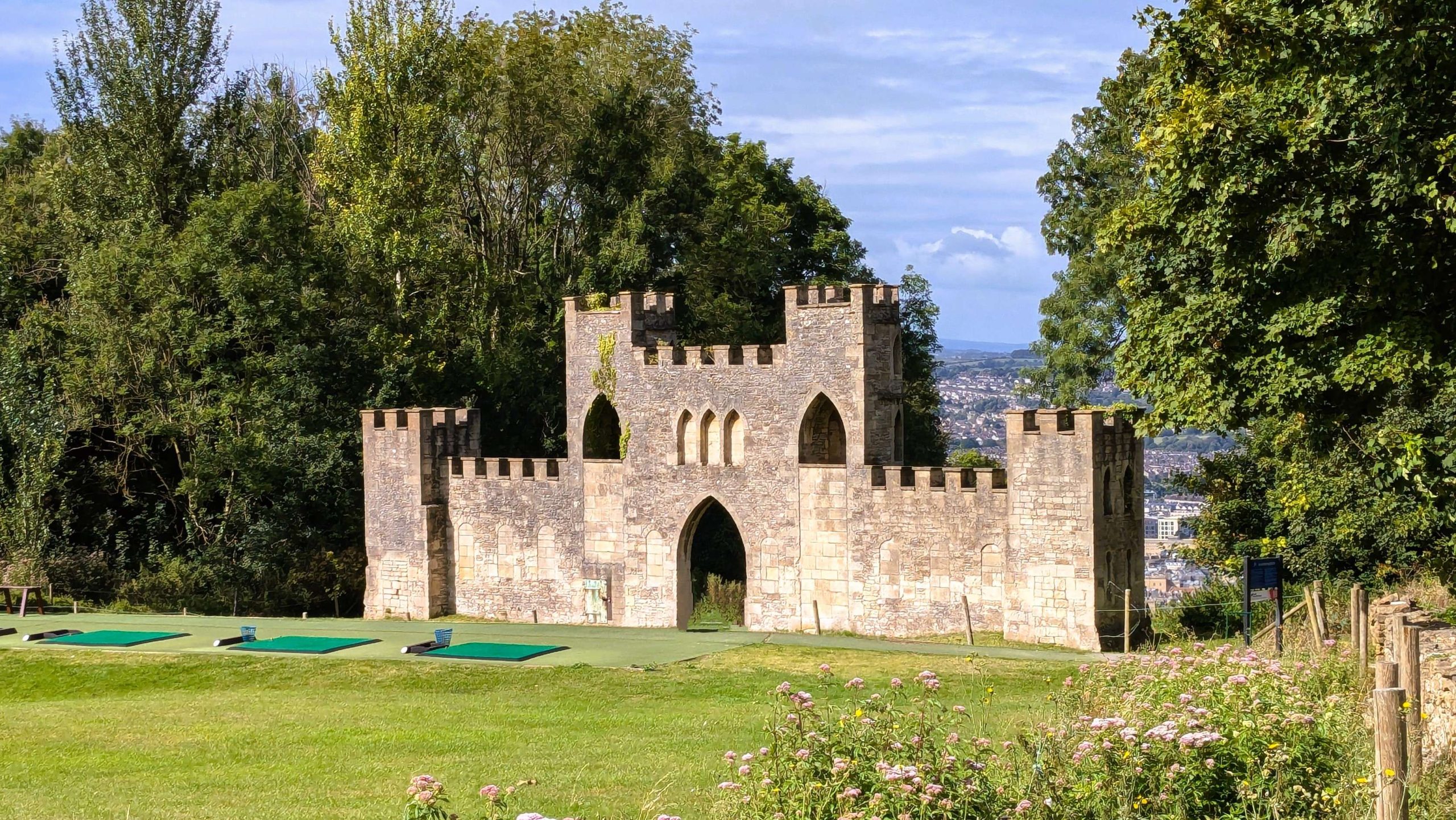 Apparently, it was not built to get the benefit of this fine view but the opposite. It seems that it was commissioned by Ralph Allen to "improve the prospect" from his town house in Bath. We followed footpaths through the golf course and then dropped steeply down to Bathampton, where we joined the towpath back to our boat. The whole route along the towpath was incredibly busy and obviously the place to visit on a fine Sunday morning.
Apparently, it was not built to get the benefit of this fine view but the opposite. It seems that it was commissioned by Ralph Allen to "improve the prospect" from his town house in Bath. We followed footpaths through the golf course and then dropped steeply down to Bathampton, where we joined the towpath back to our boat. The whole route along the towpath was incredibly busy and obviously the place to visit on a fine Sunday morning.
I managed to squeeze seventeen litres from the jerrycan into the main fuel tank to fill it up so, before lunch, I took it back to the boatyard to top it up so we would still have twenty litres in reserve should we ever need it. Today, the place was a lot calmer, with only one boat being collected and none needing to be mucked out and turned around, which made it a lot easier to get served.
We made one more foray into the city that afternoon, walking over to the Royal Crescent and returning via the river and the locks.
While we were in a city we had decided to treat ourselves to a Thai takeaway in the evening, which proved surprisingly difficult to arrange, as everywhere was very busy. Small outlets were engaged and larger chains insisted that orders could only be placed through JustEats or Deliveroo. We managed to get someone to take an order in the end but we did find it surprising that it should be so difficult here when it has always been so simple in other towns and cities.

